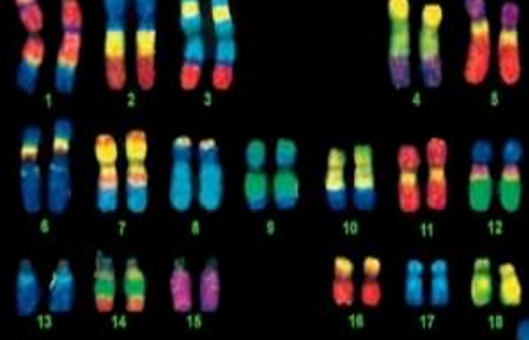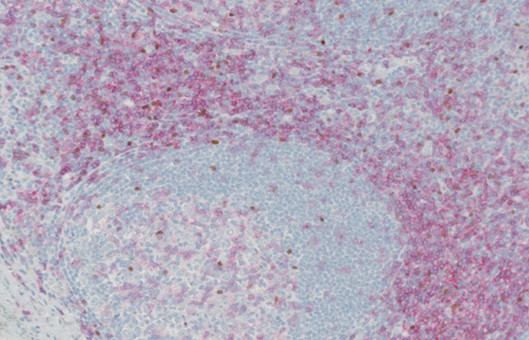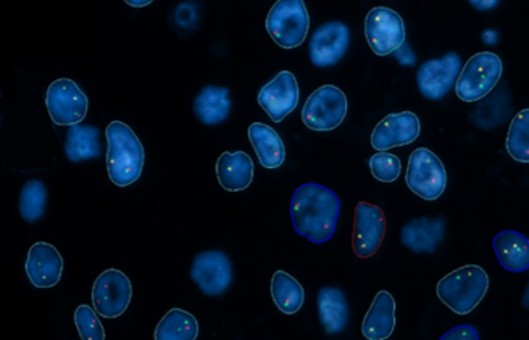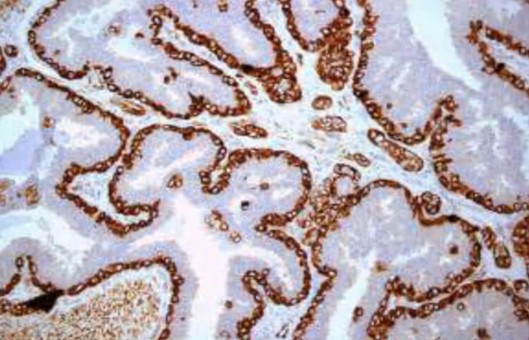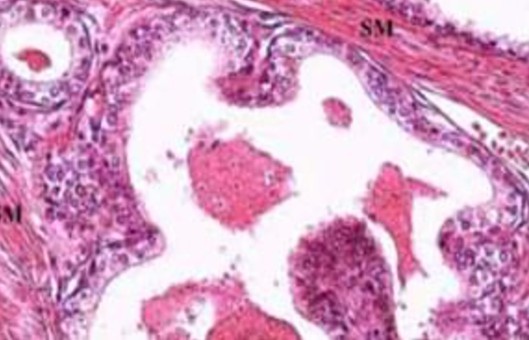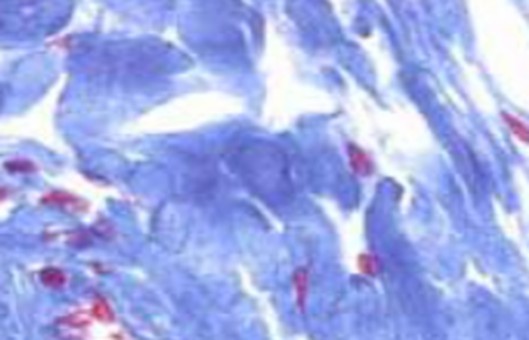ISH Protocol for Whole-Mount Embryos
GUIDELINE
The ability to visualize the expression of a gene in both time and space is an essential tool of developmental biology. Here, we detail a robust method for in situ hybridization of RNA probes to whole pieces of fixed tissue. This method has been optimized for reliable and sensitive visualization of the spatial patterns of gene expression in mouse embryo tissue.
METHODS
Transcription of labeled probe
- Obtain a clone of the gene of interest. Select two restriction enzymes, each with a unique site at one end of the cloned fragment, and linearize 10-20 μg of plasmid with each.
- Phenol/chloroform extract the DNA, add a one-tenth volume of RNase-free 3 M NaOAc and 2.5 vol of RNase-free absolute ethanol, and precipitate at -20°C for 30 min.
- Pellet the DNA in a refrigerated microfuge for 15 min.
- Wash the pellet in ice-cold RNase-free 70% ethanol and air-dry.
- Resuspend the DNA in RNase-free water at a final concentration of 1 μg/μL. The linearized plasmid can be stored at -20°C and used for multiple probe synthesis reactions.
- Select an appropriate RNA polymerase for each of the linearized constructs.
- Mix the following in a 1.5 mL RNase-free tube, including 8.5 μL sterile RNase-free water, 4 μL 5×transcription buffer, 1 μL linearized plasmid (1 μg/μL), 2 μL 0.1 M DTT, 2 μL 10×DIG RNA labeling mix, 1.5 μL placental ribonuclease inhibitor (40 U/μL), 1 μL SP6, T7, or T3 RNA polymerase (20 U/μL).
- Incubate at 37°C (or 40°C for SP6) for 1 h, then add another 20 U of SP6 RNA polymerase. Incubate for a further hour at 37°C or 40°C.
- Remove a 1 μL aliquot and run on a 1% agarose/tris-acetate-ethylene diamine tetraacetic acid gel to estimate the amount synthesized. An ethidium bromide-stained RNA band of many-fold greater intensity than the plasmid band should be noted. Estimate the number of probes produced.
- Dilute the probe to 50 μL with DEPC million H2O, add 5 μL of RNase-free 3 M NaOAc, mix, and add 2.5 vol of RNase-free absolute ethanol.
- Incubate at -20°C for 30 min to precipitate the RNA and spin down in a refrigerated microfuge for 15 min.
- Wash the pellet well (twice) with RNase-free 70% ethanol to remove of any unincorporated nucleotides.
- Redissolve the pellet in RNase-free water to a final concentration of 1.0-0.1 μg/μL and store at -20°C.
Embryo preparation and hybridization
- Dissect embryos in ice-cold PBS. Fix the embryos in 4% w/v PFA in PBS at 4°C from 3 h to overnight.
- Wash twice with PBTX for 10 min each at 4°C. Wash with 25, 50, and 75% methanol/PBTX, then twice with 100% methanol for 20 min each. The embryos can be stored at 4°C at this point, for up to a few months.
- Rehydrate by taking the embryos back through the methanol/PBTX series in reverse. The dehydration and rehydration series are essential, even if the embryos are not being stored but are to be used immediately. Wash three times with PBTX for 10 min each.
- Incubate with 10 μg/mL proteinase K in PBTX at room temperature (make a fresh dilution of proteinase K from stock solution). The length of this treatment depends on the size of the sample and the batch of proteinase K. Each batch should ideally be tested. Wash twice with PBTX for 5 min each.
- Refix the embryos in 0.2% glutaraldehyde 4% PFA in PBTX for 20 min (make a fresh dilution of glutaraldehyde and Triton X-100 from stock solutions into freshly thawed 4% PFA). Wash twice with PBTX for 10 min.
- Place the embryos in a prehybridization solution and allow them to sink. The embryos can be stored in this solution at -20°C.
- Incubate at 65°C for at least 2 h. Remove the prehybridization solution and add hybridization solution including 1.0 μg/mL DIG-labeled RNA probe. If a high background is observed, probe concentration can be decreased to 0.5 μg/mL. The tube needs to be full of hybridization solutions, otherwise, background problems may occur.
- Incubate at 65°C overnight. If the probe is short or heterologous, 55°C can be used for prehybridization, hybridization, and stringency washes.
Post hybridization washes
- Wash with 100% Solution 1 for 5 min at 65°C. From this point on, RNase-free conditions are no longer necessary.
- Wash with 75% Solution 1/25% 2×SSC for 5 min at 65°C, wash with 50% Solution 1/50% 2×SSC for 5 min at 65°C, wash with 25% Solution 1/75% 2×SSC for 5 min at 65°C.
- Wash with 2×SSC/0.1% CHAPS twice for 30 min at 65°C. During these washes, start pre-absorbing the antibody. Wash with 0.2×SSC/0.1% CHAPS twice for 30 min at 65°C. Wash with TBTX twice for 10 min at room temperature.
- Pre-block the embryos with 10% sheep serum and 2% BSA in TBTX for 2-3 h at room temperature.
- Remove the 10% sheep serum, 2% BSA from the embryos and replace them with the preabsorbed antibody, and incubate them on a rocker overnight at 4°C.
Creative Bioarray Relevant Recommendations
- RNA In Situ Hybridization is a widely-applicable histology technique that allows for the visualization of mRNA expression in cells or tissues. Creative Bioarray offers Custom RNA ISH, and we have extensive experience in the quantification of RNA expression on a cell-by-cell basis across a whole tissue section or within defined regions of interest.
NOTES
- A number of the reagents in this protocol are known to be irritants or toxins whereas the safety status of others is unclear. The use of a fume hood and protective clothing is necessary in several cases.
- Several options exist for both probe labeling and color development. UTP labeled with biotin or fluorescein and the corresponding antibodies, conjugated to either alkaline phosphatase, peroxidase, or fluorescent markers, are commercially available.
RELATED PRODUCTS & SERVICES
Reference
- Hargrave M, Bowles J, Koopman P. (2006). "In situ hybridization of whole-mount embryos." Methods Mol Biol. 326, 103-13.
